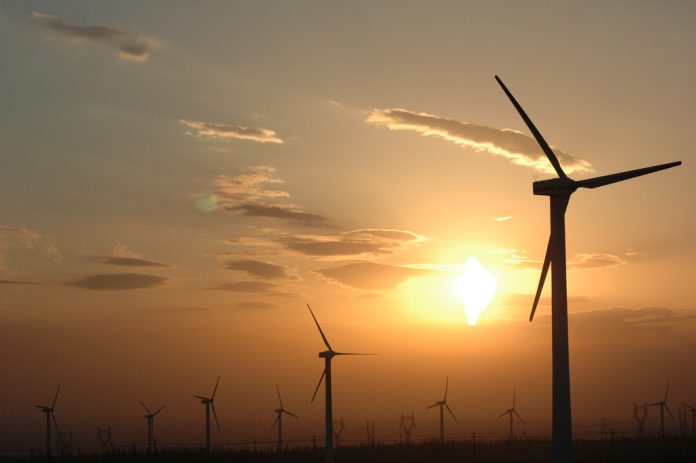Balochistan could become energy exporter, World Bank says

MG News | August 09, 2024 at 12:19 PM GMT+05:00
August 09, 2024 (MLN): Balochistan has enormous potential of variable renewable energy (VRE) which can electrify the province and transform it into a net exporter of energy, reducing Pakistan’s need for electricity imports, noted a World Bank study released on Thursday.
The WB in its ‘Balochistan Renewable Energy Development Study’ noted that a longer-term VRE development in Balochistan will be very beneficial for the region in particular and for Pakistan as a whole as any potential VRE surplus can be exported to other provinces— or internationally, which reduces the electricity import bill.
The existing import connection lines can then be used for stabilizing the grid, exchanging electricity with other countries at a competitive price, and optimizing the annual supply mix, it said.
In the short term (2028), a surplus VRE supply may not be available for consistent export throughout the year, but there might be a seasonal opportunity for export (Reverse Power Flow) through the Central Asia-South Asia (CASA 1000) HVDC Transmission Line—soon available—to Central Asia (Uzbekistan, Kyrgyz Republic and potentially to Kazakhstan)
In this Central Asia Regional Electricity Market (CAREM), countries have an electricity deficit in winter, and demand is growing.
It is noteworthy that countries in central Asia might be interested in supporting the GW-scale opportunity for their seasonal electricity demand deficit.
This study noted that Balochistan offers an impressive resource potential for economically viable solar and wind power generation, both of which are mostly untapped so far.
With a Photovoltaic (PV) potential ranging from 2,000 to 2,500 kWh/m2, Balochistan emerges as one of the world’s most resource-rich regions.
PV power in Balochistan can achieve grid utilization factors up to 35%, and its supply profile correlates positively with the demand profile.
Additionally, excellent available Direct Normal Irradiation (DNI) of up to 2,500 kWh/m² per year in some areas of Balochistan offers great opportunities for Concentrated Solar Power (CSP).
Furthermore, Balochistan has the best spots for wind power within Pakistan in the remote areas of Chagai and Panjgur, with average wind speeds of up to 10 m/s at a height of 100m, corresponding to a 15 GW power generation potential capacity at a highly competitive cost from clean energy resources.
In addition, there is a potential for 1.7 GWp Distributed PV to solarize about 28,000 grid-connected tube wells operated by farmers, the main electricity consumer in Balochistan.
Installation of DPV would not only free up an additional capacity in the grid for further VRE installation but when combined with the investment in efficient motors and pumps; it would dramatically reduce the electricity losses in this segment.
In other words, it would improve the electricity company’s financial stability by reducing the approximately $500 million annual losses by 2028, contributing to reducing the circular debt in the sector.
Copyright Mettis Link News
Related News
| Name | Price/Vol | %Chg/NChg |
|---|---|---|
| KSE100 | 134,299.77 290.06M |
0.39% 517.42 |
| ALLSHR | 84,018.16 764.12M |
0.48% 402.35 |
| KSE30 | 40,814.29 132.59M |
0.33% 132.52 |
| KMI30 | 192,589.16 116.24M |
0.49% 948.28 |
| KMIALLSHR | 56,072.25 387.69M |
0.32% 180.74 |
| BKTi | 36,971.75 19.46M |
-0.05% -16.94 |
| OGTi | 28,240.28 6.19M |
0.21% 58.78 |
| Symbol | Bid/Ask | High/Low |
|---|
| Name | Last | High/Low | Chg/%Chg |
|---|---|---|---|
| BITCOIN FUTURES | 118,140.00 | 119,450.00 115,635.00 |
4270.00 3.75% |
| BRENT CRUDE | 70.63 | 70.71 68.55 |
1.99 2.90% |
| RICHARDS BAY COAL MONTHLY | 97.50 | 0.00 0.00 |
1.10 1.14% |
| ROTTERDAM COAL MONTHLY | 108.75 | 108.75 108.75 |
0.40 0.37% |
| USD RBD PALM OLEIN | 998.50 | 998.50 998.50 |
0.00 0.00% |
| CRUDE OIL - WTI | 68.75 | 68.77 66.50 |
2.18 3.27% |
| SUGAR #11 WORLD | 16.56 | 16.60 16.20 |
0.30 1.85% |
Chart of the Day
Latest News
Top 5 things to watch in this week
Pakistan Stock Movers
| Name | Last | Chg/%Chg |
|---|
| Name | Last | Chg/%Chg |
|---|



